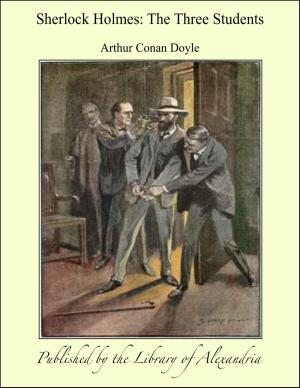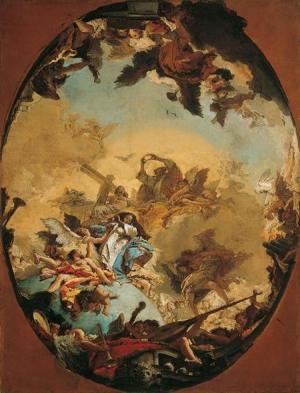The History of Chivalry: Knighthood and Its Times (Complete)
Nonfiction, Religion & Spirituality, New Age, History, Fiction & Literature| Author: | Charles Mills | ISBN: | 9781465541628 |
| Publisher: | Library of Alexandria | Publication: | March 8, 2015 |
| Imprint: | Language: | English |
| Author: | Charles Mills |
| ISBN: | 9781465541628 |
| Publisher: | Library of Alexandria |
| Publication: | March 8, 2015 |
| Imprint: | |
| Language: | English |
The propriety of my writing a History of Chivalry, as a companion to my History of the Crusades, was suggested to me by a friend whose acquaintance with middle-age lore forms but a small portion of his literary attainments, and whose History of Italy shows his ability of treating, as well as his skill in discovering, subjects not hitherto discussed with the fulness which their importance merits. The works of Menestrier and Colombiere sleep in the dust of a few ancient libraries; and there are only two other books whose express and entire object is a delineation of the Institutions of chivalry. The first and best known is the French work called “Mémoires sur l’ancienne Chevalerie; considérée comme un Etablissement Politique et Militaire. Par M. de la Curne de Sainte Palaye, de l’Académie Françoise,” &c. 2 tom. 12mo. Paris, 1759. The last half, however, of the second volume does not relate to chivalry, and therefore the learned Frenchman cannot be charged with treating his subject at very great length. It was his purpose to describe the education which accomplished the youth for the distinction of knighthood, and this part of his work he has performed with considerable success. But he failed in his next endeavour, that of painting the martial games of chivalry, for nothing can be more unsatisfactory than his account of jousts and tournaments. As he wished to inform his readers of the use which was made in the battle field of the valour, skill, and experience of knights, a description of some of the extraordinary and interesting battles of the middle ages might have been expected. Here also disappointment is experienced; neither can any pleasure be derived from perusing his examination of the causes which produced the decline and extinction of chivalry, and his account of the inconveniences which counterbalanced the advantages of the establishment. Sainte Palaye was a very excellent French antiquarian; but the limited scope of his studies disqualified him from the office of a general historian of chivalry. The habits of his mind led him to treat of knighthood as if it had been the ornament merely of his own country. He very rarely illustrates his principles by the literature of any other nation, much less did he attempt to trace their history through the various states of Europe. He has altogether kept out of sight many characteristic features of his subject. Scarcely any thing is advanced about ancient armour; not a word on the religious and military orders; and but a few pages, and those neither pleasing nor correct, on woman and lady-love. The best executed part of his subject regards, as I have already observed, the education of knights; and he has scattered up and down his little volume and a half many curious notices of ancient manners.
The propriety of my writing a History of Chivalry, as a companion to my History of the Crusades, was suggested to me by a friend whose acquaintance with middle-age lore forms but a small portion of his literary attainments, and whose History of Italy shows his ability of treating, as well as his skill in discovering, subjects not hitherto discussed with the fulness which their importance merits. The works of Menestrier and Colombiere sleep in the dust of a few ancient libraries; and there are only two other books whose express and entire object is a delineation of the Institutions of chivalry. The first and best known is the French work called “Mémoires sur l’ancienne Chevalerie; considérée comme un Etablissement Politique et Militaire. Par M. de la Curne de Sainte Palaye, de l’Académie Françoise,” &c. 2 tom. 12mo. Paris, 1759. The last half, however, of the second volume does not relate to chivalry, and therefore the learned Frenchman cannot be charged with treating his subject at very great length. It was his purpose to describe the education which accomplished the youth for the distinction of knighthood, and this part of his work he has performed with considerable success. But he failed in his next endeavour, that of painting the martial games of chivalry, for nothing can be more unsatisfactory than his account of jousts and tournaments. As he wished to inform his readers of the use which was made in the battle field of the valour, skill, and experience of knights, a description of some of the extraordinary and interesting battles of the middle ages might have been expected. Here also disappointment is experienced; neither can any pleasure be derived from perusing his examination of the causes which produced the decline and extinction of chivalry, and his account of the inconveniences which counterbalanced the advantages of the establishment. Sainte Palaye was a very excellent French antiquarian; but the limited scope of his studies disqualified him from the office of a general historian of chivalry. The habits of his mind led him to treat of knighthood as if it had been the ornament merely of his own country. He very rarely illustrates his principles by the literature of any other nation, much less did he attempt to trace their history through the various states of Europe. He has altogether kept out of sight many characteristic features of his subject. Scarcely any thing is advanced about ancient armour; not a word on the religious and military orders; and but a few pages, and those neither pleasing nor correct, on woman and lady-love. The best executed part of his subject regards, as I have already observed, the education of knights; and he has scattered up and down his little volume and a half many curious notices of ancient manners.















